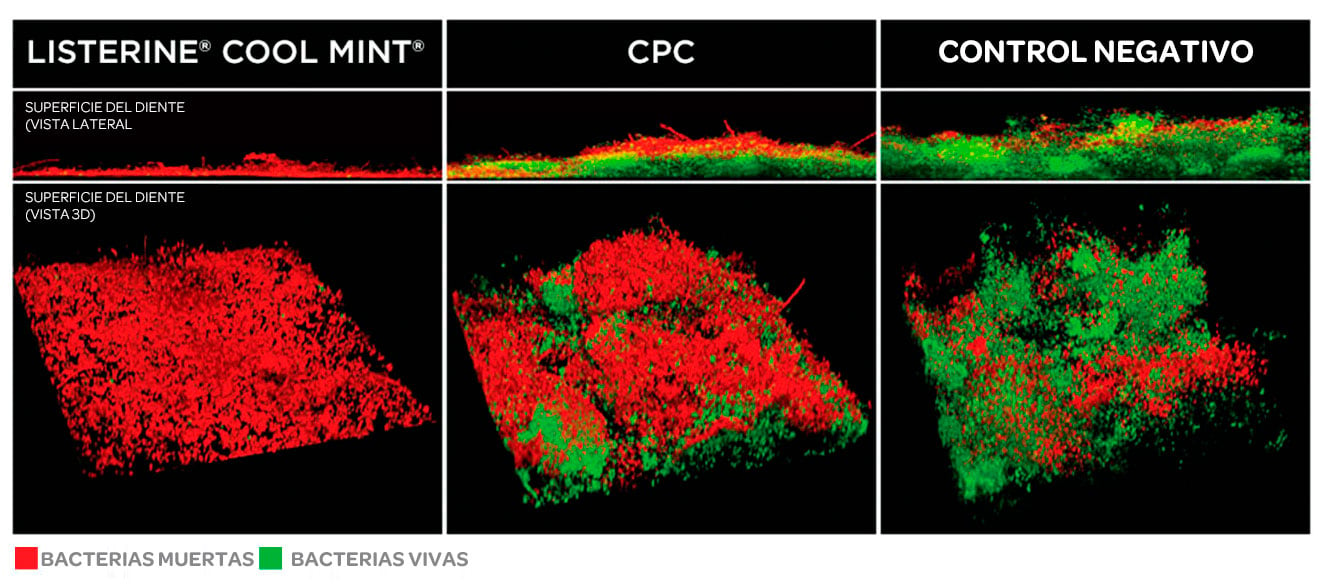THE ANTIMICROBIAL ACTION OF LISTERINE® ANTISEPTIC COMES FROM ITS UNIQUE FORMULA, WHICH CONTAINS A FIXED COMBINATION OF 4 ESSENTIAL OILS FOUND IN NATURAL PLANT SOURCES.
3.2_image-1.png

WHAT DOES LISTERINE DO?
- LISTERINE® Mouthwash reaches every site in the mouth, reducing plaque biofilm in areas that patients may miss when brushing and interdental cleaning
- The 4 essential oils in LISTERINE® penetrate deeply into the bottom layers of the plaque biofilm, breaking down its structure in places that are more difficult for a toothbrush or interdental cleaning device to access1-3
A BOLD ACHIEVEMENT: BETTER PLAQUE REDUCTION THAN CPC.4
- LISTERINE® Antiseptic penetrates deeper into the plaque biofilm than cetylpyridinium chloride (CPC) mouthrinse
- Confocal microscopy reveals a higher ratio of dead bacteria to living bacteria within the biofilm with LISTERINE® than with CPC mouthrinse or negative control
3.2_image-2.jpg

THE 4 ESSENTIAL OILS IN LISTERINE® FIGHTS 1.8X MORE BACTERIA THAN CPC MOUTHRINSES.4
*Based on self-reported data from a survey of patients in Brazil, Japan, Thailand, United Kingdom, and United States (N=4134).
References: 1. Foster JS, Pan PC, Kolenbrander PE. Effects of antimicrobial agents on oral biofilms in a saliva-conditioned flowcell. Biofilms. 2004;1(1):3-10. 2. Minah GE, DePaola LG, Overholser CD, et al. Effects of 6 months use of an antiseptic mouthrinse on supragingival dental plaque microflora. J Clin Periodontol. 1989;16(6):347-352. 3. Walker C, Clark W, Wheeler T, Lamm R. Evaluation of microbial shifts in supragingival plaque following long-term use of an oral antiseptic mouthrinse. J Dent Res. 1989;68:412. 4. Data on file, Johnson & Johnson Consumer Inc.
85% OF PATIENTS KNOW REMOVING PLAQUE PROMOTES GOOD ORAL HEALTH.*
PROMOTE A RINSE THAT REDUCES PLAQUE.

